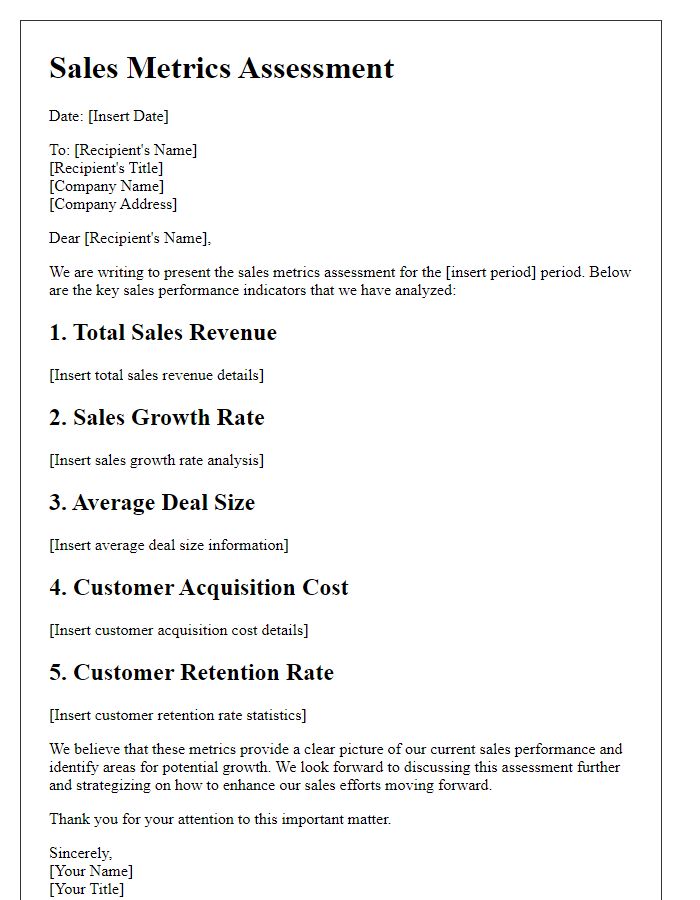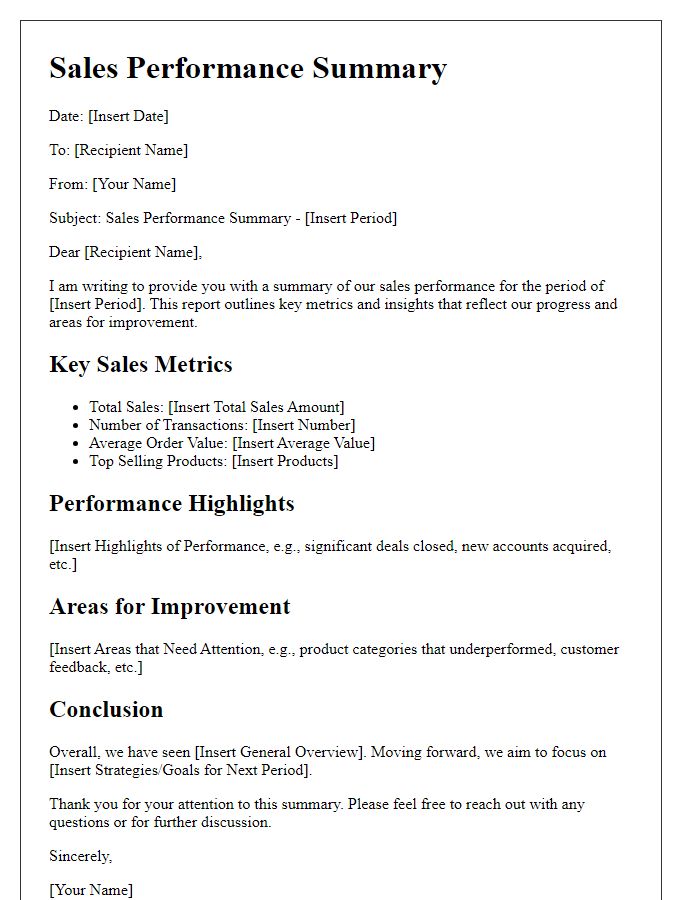Are you looking to enhance your sales performance appraisal process but don't know where to start? Crafting a comprehensive letter template can transform how you evaluate your team's achievements and set future goals. In this article, we'll dive into effective strategies for creating a letter that not only highlights success but also motivates your sales team for continued improvement. Stay tuned as we share valuable tips and templates to elevate your appraisal discussions!

Objective Evaluation Metrics
Sales performance appraisals rely on objective evaluation metrics to assess an employee's effectiveness in achieving targets. Common metrics include the total sales volume (measured in dollars), customer acquisition rates (new clients gained within a quarter), and retention rates (percentage of existing clients retained annually). Furthermore, conversion rates (percentage of leads that result in sales) are critical in understanding an employee's ability to close deals. Other notable metrics include the average deal size (average revenue generated per sale) and sales cycle length (average time taken to close a deal). Performance against these metrics can provide valuable insight into sales strategies, personal contribution to the team's success, and areas requiring improvement. Evaluations conducted on a quarterly basis allow for timely feedback and goal adjustments to optimize performance.
Achievements and Milestones
Sales performance appraisals highlight key achievements and milestones crucial for evaluating an individual's effectiveness and contributions to revenue generation. Notable achievements often include exceeding quarterly sales targets by significant percentages, such as achieving 120% of the sales target in Q2 2023. Milestones may involve successfully closing high-value deals, for example, securing a $500,000 contract with a prominent client in the technology sector, illustrating exceptional negotiation skills. Additionally, building strong relationships with key stakeholders can enhance customer retention, contributing to a 25% increase in repeat business. Participation in industry conferences, such as the 2023 Sales Leadership Summit, showcases commitment to professional development and networking. Tracking performance metrics, such as average deal size and sales cycle duration, provides quantifiable evidence of growth and effectiveness in a competitive environment. Such insights create a comprehensive picture of sales accomplishments and future potential.
Areas for Improvement
Performance appraisals can highlight areas needing enhancement, particularly in sales roles. Sales representatives often face challenges such as meeting quarterly targets of $100,000, requiring a deep understanding of customer relationship management (CRM) systems like Salesforce. Improvements may include developing stronger negotiation skills by attending workshops or engaging in role-playing exercises. Additionally, adopting effective lead generation strategies, such as leveraging social media platforms like LinkedIn, can expand their client base. Regularly analyzing sales data and metrics, including conversion rates and customer acquisition costs, can pinpoint weaknesses in the sales funnel. Investing time in personal development through online courses can also bolster confidence and adaptability, driving overall sales performance.
Feedback and Recommendations
Sales performance appraisals play a critical role in evaluating the effectiveness of sales strategies and employee contributions. Collecting data-driven insights from KPIs (Key Performance Indicators) such as monthly revenue targets, customer acquisition rates, and retention statistics is essential for understanding performance levels. Adjustments in sales techniques or training sessions may be recommended based on individual performance metrics, such as achieving 120% of the sales quota or demonstrating innovative lead generation methods. Offering constructive feedback on communication styles, negotiation skills, and client relationship management can lead to enhanced sales outcomes. Establishing clear objectives for the next quarter, including specific growth targets or market expansion goals, ensures continuous professional development and improved sales results.
Future Goals and Targets
A comprehensive sales performance appraisal includes future goals and targets necessary for achieving success in the competitive market landscape. Setting specific targets for quarterly sales growth, such as a 15% increase in revenue for Q2 2024, helps measure progress effectively. Additionally, expanding the client base within the technology sector, including firms in Silicon Valley, demonstrates ambition and strategic direction. Enhancing customer satisfaction scores to at least 90% through improved service and follow-up emphasizes the importance of client relationships. Implementing a training program for the sales team, aimed to improve closing rates from 20% to 30%, will prepare the team to meet these milestones. Overall, these clearly defined objectives create a roadmap for sustained growth and accountability in sales performance.













Comments